Join the discussion below

Dr. Ann Shippy is Board Certified in Internal Medicine and Certified in Functional Medicine. She operates a successful private practice in Austin, TX where she is known for her compassionate, attentive, and tireless approach to caring for her patients. She has gained a considerable reputation for successfully diagnosing and treating... Read More

Lauren Tessier, ND, is a practicing Naturopathic Physician licensed by the state of Vermont. Her practice Life After Mold in Waterbury, Vermont is the East Coast’s only formerly certified, CIRS-literate Naturopathic practice. Life After Mold services patients suffering from multi-symptom, multi system illness, complicated by co-morbid conditions such as MCS,... Read More
- Delve into the intricate relationship between mycotoxins and their impact on dysbiosis and leaky gut, understanding the systemic effects on health
- Explore how glyphosate, a common herbicide, can exacerbate dysbiosis and leaky gut, further complicating the health challenges posed by mycotoxins
- Learn about the mutual amplification of mycotoxins and glyphosate, and discover actionable strategies to mitigate their combined impact on health
- This video is part of the Mold, Mycotoxin, and Chronic Illness Summit
Related Topics
Dysbiosis, Fungi, Gap Junctions, Glyphosate, Inflammation, Leaky Gut, Mycotoxin, Oxidative Damage, Tight JunctionsAnn Shippy, MD
Welcome to Mold, Mycotoxin, and Chronic Illness Summit. I’m your host Dr. Ann Shippy. Next, we get to speak with Dr. Lauren Tessier. She’s a naturopathy physician specializing in mold-related illnesses. She’s the former president of ISEAI, which is the International Society for Environmentally Acquired Illnesses. And she is truly on a mission to help people learn about mold and recover. Thanks so much for joining us.
Lauren Tessier, ND
Hello again.
Ann Shippy, MD
I could just hang out with you all the time here. Just so knowledgeable and have such great information. So this is awesome that we get to meet again. Let’s talk. Let’s do a little overview this time and just really talk about what mycotoxins are.
Lauren Tessier, ND
Sure, sure. So I know the whole entire summit is about Mycotoxins, but you know, Mycotoxins are those really, really teensy tiny what we call secondary metabolites that are produced by some fungi, both yeasts and molds and these tiny little molecules that are pretty sneaky. They are lipid soluble, so they pass into cells really easily. And once they’re in those cells, they can cause a lot of oxidative damage to any part of the cell that has some fat in it. And it just so happens that the cells in our body have our fatty lipid membrane and all of the machinery inside our organelles also have that fatty lipid membrane. So these mycotoxins can really impact a lot of or most of the areas in the body, right? And then the other difficult part about them is they tend to bio-accumulate in where they really like to bio-accumulate as in areas that have a lot amount, a high amount of lipids, fat, so brain, liver, kidneys. But the interesting thing about Mycotoxins is they really, they have a few different ways that they can get into the body. Of course, we have our inhalation that we typically see from the environment. There’s also transdermal to a lesser extent, but somewhere between the transdermal and the inhalational. That’s where we find the ingestion component. That’s where we find that absorption through the gut.
Ann Shippy, MD
Yeah. So let’s talk a little bit about when that happens. Like, what is it that causes us to ingest mycotoxins?
Lauren Tessier, ND
Yeah. So ingesting of mycotoxins. So mycotoxins can exist in like a free form in our food or they can exist as mold-contaminated, active, growing, mold active growing fungi in these foods that are then secreting it. So essentially you can either have the mycotoxins alone or the organism making them like a toxin in our food system. I mean, sad to say, the U.S. has some of the loosest even when compared to some developing nations, the loosest controls on some of these mycotoxins in our food such as ochratoxin, aflatoxin. Those are typically the big ones and then we have the vomitoxin very properly named, you know. Yeah. Yeah, absolutely. So, you know.
Ann Shippy, MD
It’s very shocking how behind we are on setting standards for like there’s so much research about ingesting mycotoxins and the fact that we don’t have better standards really is surprising. So follow the money. Look at who’s in control of setting those standards. So yeah, so buyer beware, except for the companies that are really starting to do third-party testing and really protect us just through their pride in their brand.
Lauren Tessier, ND
Right. Right. And it’s, I always tell people if you’re going to be ingesting what’s usually mycotoxins rich foods just already assume there is the legal allowable limit because what they end up doing is they have a pile of moldy corn with, you know, let’s just say like 10 pounds of mycotoxins. It’s a horrible number. But so what they do is they add uncontaminated corn to it until they dilute that 10 pounds of toxin down to the legal allowable standard for however many tons that is using 10 pounds verbiage, a horrible term for like mycotoxins that it’s less than pounds within tons. But that’s just kind of the global example of the toxin. Yeah, yeah, yeah.
Ann Shippy, MD
So, because years ago I sat next to a woman on an airplane that worked for the Mars Corporation, and I learned so much from her. She was involved in the quality aspects of their incoming material. And I always thought about Mars as like, you know, it’s a candy bar company, but it’s so much more. And she was saying that they had one of the toughest standards for their incoming material for corn of any company that she knew. So it actually made me like, oh, okay, I like this company. And she said corn is especially hard to get that’s not truly contaminated. And so she was on a, you know, a mission to really tell people to not eat corn because it’s really hard to get corn that meets, you know, even more, you know, the Mars standards. They have to reject a lot of corn.
Lauren Tessier, ND
Right. Right. And that’s probably from all the corn syrup, right? Mars candy, I think. Right.
Ann Shippy, MD
Yeah. Well, and dog food, they even do it as their standards for dog food and other cereals and that kind of thing that they produce. I’m actually quite impressed with I guess it is a family-owned business still and that they just really want to have high-quality food for the food that they produce for animals and humans.
Lauren Tessier, ND
Yeah, that’s phenomenal to hear. I would not have expected that. Sorry, Mars. I apologize, I stand corrected now, but yeah.
Ann Shippy, MD
Yeah. So sorry. That was a segway.
Lauren Tessier, ND
Yeah. No, it’s great. It’s a great segway.
Ann Shippy, MD
It’s important to know that a lot of these grains, the coffee, the chocolate, and the nuts and seeds are all things to be considering where you’re getting and how you’re eating them. And I like what you said where you might have to assume certain foods are already at the cut-off.
Lauren Tessier, ND
Mm hmm. Yeah, absolutely. Absolutely.
Ann Shippy, MD
Which is too high.
Lauren Tessier, ND
Too high. Too high. Too high. And again, compared to a lot of developing nations our standards are, not our standards too high but the legally allowable limits are higher. And if you compare those limits to some of the limits or some of what we call NOEL, the non-observable, I am blanking on the E one. No, it’s essentially a non-observable negative impact. So when they’re doing mycotoxins studies, they’ll look for issues that pop up. And you know, a lot of these food exposures are far higher. Actually, I have that backward. My apologies, in a backup for a second on that one if that’s okay. Okay. Yeah. So what we are seeing is that our food standards tend to allow higher amounts and what we usually think to be these like no observable impacts are actually coming to find out in the research having big impacts on the cellular functioning of the animals that they’re testing, the human cell lines that they’re testing. So, you know what?
Ann Shippy, MD
We don’t have any idea of what the limits should be. And I think the closer to zero, the better.
Lauren Tessier, ND
Absolutely.
Ann Shippy, MD
Especially in children.
Lauren Tessier, ND
And so, you know, a lot of the goals here, the ways you can really decrease that, obviously, is to reduce the things that are coming into your body that are going to have and carry mycotoxins. But, you know, there’s this whole other world of like gut health and dysbiosis that has almost this ouroboros, this you know, chicken egg kind of dance-off. Is it the mycotoxins and the fungi causing the dysbiosis or is it the dysbiosis supporting and allowing the fungi and the mycotoxins to flourish? So I think it’s really appropriate that you know, your summit this time around is talking about the intersection of, you know, glyphosate really realistically and what’s happening in the gut with fungi and mycotoxins.
Ann Shippy, MD
Well, let’s explore that a little bit more. Let’s explain how mycotoxins may be contributing to dysbiosis.
Lauren Tessier, ND
Sure. Oh my gosh. So I kind of up, I separate typically the idea of what we’re talking about. I separate our organisms from what they produce, their mycotoxins. And so, you know, just from a leaky gut perspective, you can typically say that dysbiosis lays the foundation for the leaky gut. But if we kind of saved dysbiosis for later and just kind of get into the superficial aspect of how fungi can directly impact the gut leading to leaky gut, they have these little arms, these little hyphae, almost like they’re roots of a plant. But you can think of the roots as mycotoxins that will grow into things and kind of settle in there and grasp on and hold on to them. And so we actually see in the research that fungi are more than capable of driving their little hyphae into our mucous membranes and locking in. And so what ends up happening there is your cells get really upset, they’re really panicky. They start to release their inflammation signals with that, you get some of that swelling and with that physical mechanical swelling and that inflammation, you start to get some of what we call gap junctions. The buttons that keep our cells together. You get this physical separation of the cells, which then allows for the entrance of anything in the gut. And so that’s more of the fungal organism and how it’s leading to leaky gut, whereas mycotoxins themselves, they cause oxidative damage to the cells in the lining of the gut, which then of course leads to inflammation. That same cascade of that swelling separated gap junctions, leakiness, allowing the entrance of these things into the body, so much so that the research directly says, you know, vomitoxin, zearalenone, different subtypes of aflatoxin, T2, ochratoxins A they all have an impact on tight junctions and the associated proteins, the clot ends and the occluded. And so that’s kind of the direct link. You got a totally just, oh, missed omitting the discussion of dysbiosis.
Ann Shippy, MD
So let’s talk a little bit about what the symptoms are when we’re having these issues with dysbiosis and increased intestinal permeability or leaky gut.
Lauren Tessier, ND
Yeah. So anything, anything which is, you know, I think might be really shocking to people. I think folks when they think of gut issues. I’m going to be pooping funny. I’m going to have gut rumbling and, you know, stinky stools, all that kind of stuff. But the reality is our gut is it’s our rainforest, you know, it’s the part of our body that transforms things and really is the core part of our health. You know, I think a lot of people get it kind of like, yeah, yeah, yeah, gut health first, this kind of thing. But it’s really true to the point that there are animal studies that show that when you create a dysbiotic balance in the gut, you can in Alzheimer’s models essentially have mice develop more severe Alzheimer like symptoms. And then as soon as you bring in the probiotics in as you bring in that balance back into the gut, a lot of those Alzheimer’s like symptoms start to clear up. It’s not just in animals, we actually.
Ann Shippy, MD
Leaky gut, leaky brain.
Lauren Tessier, ND
Yep, absolutely, like you gut, leaky brain. And we even see in human studies, actual human studies, not human cell lines, where people become dysbiotic we see flares and anxiety and depression, and then as soon as they replenish the beneficial bacteria and remove that dysbiosis their anxiety and depression drastically improve. So, you know, what are the symptoms and dysbiosis is it’s everything, you know. And there’s a huge neurological component here, too. I tell people, to think about the nervous system’s connection to the brain as just a fatty highway. We know that toxins can dissolve into cell membranes and into high lipid areas and realistically we have two neurons essentially connecting our brain to our gut. And that’s just one fatty highway that toxins can just dissolve into and start that inflammatory signal back up to the brain. So even though these physically seem really far apart when you think of circulation, lymphatics, when you’re directly dissolving into the nervous system tissue, it’s a really quick jaunt up to the brain.
Ann Shippy, MD
Yeah. So I think what your point is, is that you may have pretty significant dysbiosis and not even feel anything in your gut. You may think it’s normal, but you see systemic responses in other places in the body, especially in the brain. But you might feel some gut symptoms, too.
Lauren Tessier, ND
Oh, for sure. Absolutely. And you know, of course, too, with that comes autoimmunity and generalized systemic inflammation. And, you know, the list really goes on and on when it comes to this dysbiosis. Yeah. Yeah. It’s like playing with the six degrees of separation that Kevin Bacon gave in the nineties. I might be dating myself, but I always tell people, six degrees of separation, we can connect anything in the body. You just got to give me a few minutes, you know.
Ann Shippy, MD
For sure. Lauren, I love the rainforest analogy that you gave. It was just said it’s the center of the universe when it’s kind of off everything’s going to be off because it’s involved in so many different aspects of the rest of the body’s physiology.
Lauren Tessier, ND
Right. Right.
Ann Shippy, MD
Yeah. So, let’s tie in glyphosate because nobody’s immune from glyphosate these days. And it has such a, I think, you know, not just one plus one equals two, it’s one plus one equals a thousand kind of thing. Yeah. We got the glyphosate and the mycotoxins both.
Lauren Tessier, ND
Right. Right. So you know the biggest, so to pan out for a second for folks that are maybe mildly familiar with glyphosate or maybe not at all, it’s okay if you’re not, it is in some weed-killing products. I’m not clear that we should say the company name. I don’t know.
Ann Shippy, MD
I don’t care but go ahead.
Lauren Tessier, ND
Okay, great. So glyphosate is a core component and a lot of pesticides, including Roundup. You know, this has come under just a lot of legal cases around severe illness resulting from exposure to Roundup, including cancers. And I believe a couple of cases have been won for that particular topic for cancer with clearly with Roundup exposure. And when Roundup first came out or glyphosate first came out, they essentially said, hey, like the target for glyphosate is not found in human cells and so it won’t be a problem. What came to pass is that glyphosate is really, really, really good at pretty much-targeting anything but human cells. And that also means it’s really great at targeting bacteria, it’s great at targeting our microbiome. The downfall, the biggest downfall about that is for some reason, some way, shape, or form Glyphosate is really, really good at targeting our beneficial bacteria. It is absolutely in the literature when you are exposed to labor, say you’re dropping down, your lactobacillus counts, your bifidobacteria counts, your firmicutes all these different kinds of global groupings of beneficial bacteria. And the problem with that is in that same broad stroke, you’re also getting plenty of resistant bacteria that are problematic. You’re salmonella, your clostridium, your klebsiella, your citrobacter, even your pseudomonas. And so the problem with that obviously is a lot of these are disease-causing elements. But there is this whole paradigm that happens. Then fungi start to kind of sniff around and say, hey, what’s going on over here? There’s a shift in the gut microbiome, you know.
Ann Shippy, MD
We can take up some real estate.
Lauren Tessier, ND
Exactly. Hey, we can take up some real estate. And it’s amazing if you look closer at fungal growth in the gut when you’re having an overgrowth of problematic bacteria, you actually see fungal overgrowth and probably bacteria, problematic bacteria run hand in hand. They actually support each other. So, a perfect example of this is Pseudomonas in Aspergillus Fumigatus growing together, growing a beautiful bio-toxic biofilm together. And so that can really be underscored by that glyphosate imbalance. The other thing that can happen is that you know, when your good bacteria die off, you’re also getting rid of all the beneficial things that they produce. And a lot of your good bacteria produce these anti-adhesion molecules which stop fungi from sticking to surfaces and holding on and starting to grow. When you also kill your good bacteria, you’re going to kill all those beautiful oil products from your short-chain fatty acids. Like a good example of this is like your propyl propanoate. And so it’s as problematic, of course. So the glyphosate is really just it’s hitting your good guys, it’s encouraging your bad guys. It’s even leading and underscoring drug resistance too, if you believe that or not, it’s in the literature.
Ann Shippy, MD
Absolutely. It’s part of why we’re seeing antibiotic resistance.
Lauren Tessier, ND
Right. And it didn’t surprise me but when I found that that’s pretty interesting you know the sideways hop between a pesticide and then leading to multidrug resistance in bacteria when you step back and think about it like yeah, it’s logical, it makes sense. Bacteria have these little fingers and they pass and share information to one another. So of course someone that made it through the glyphosate is going to be able to pass that information of how they survived on to the other problematic bacteria. So totally makes sense. But it’s a little shocking at face value when you first encounter that, you know.
Ann Shippy, MD
So I really think that people need to try to eat organic as much as possible, and it’s getting easier and easier with places like Costco carrying so much organic food and giving those options. Where are you in them?
Lauren Tessier, ND
Yes, Ann. There’s always a yes, Ann. I think that the more organic you can eat, the better. I also think that we need to be going a step further and really being, acting to support our gut in addition to eating organically. One of the hard parts of our eating organically, though, is there’s a couple of studies out there and I think it’s a pick your battles type of thing where because they’re organically grown, they don’t have fungicide applied to them. And so there is a bit of literature out there showing that there are increased mycotoxins in organic baby food compared to their non-organic counterparts. And like what a bum out, right? What I, I can, I could pull up the, like I got a research article for that.
Ann Shippy, MD
That’s quite disturbing.
Lauren Tessier, ND
I know I know. And so you really have to, you know, pick your battles. You really have to pick your battles.
Ann Shippy, MD
Oh, go ahead.
Lauren Tessier, ND
No, please.
Ann Shippy, MD
Oh, and then there are other countermeasures that we can take. So for me, eating foods that are less likely to be moldy and then eat them organic. But then there are other things that we could be doing to help support detoxification, support our gut too. I love it if you dive into some of that information.
Lauren Tessier, ND
Yeah, absolutely. It would be my pleasure. You know, I think that from a dysbiotic perspective, it’s going to be really important to try to bring balance back to the gut, and how I think about targeting that is really working on reducing inflammation and supporting that like elimination detox part of the gut. So to kind of oversimplify it, it’s make it inhospitable to the bad bugs, make it hospitable to the good bugs. And you’re really doing that through anti-inflammatories and binders. And then after that is usually when I start to work to reseed the gut because I don’t want the good bacteria that I’m putting in to have an uphill battle. I like cleaning things up a little before I start putting in those new beneficial bacteria because I also want to avoid the whole I call the war in factions side effect where you just bomb someone with probiotics before really prepping them and they’re, oh my god, I got all this gas pain and I’m uncomfortable and my stool is loosened because you’re in a war in populations literally happening in your gut at the time. So you know really I’m working first to target the inflammation and then helping to kind of bind up some of the issues there in the gut.
Ann Shippy, MD
So what are your favorite things to reduce inflammation?
Lauren Tessier, ND
Oh, yes. So I would have to say the first one is modified citrus pectin. And this is for very many reasons, I think, of modified citrus pectin as a deep binder. So it’s one of the few binders that is going to leave the gut and actually cross into the bloodstream. And I think that’s really exciting. When you put charcoal into the gut, it stays in the gut. When you put clay in the gut, it stays in the gut but with a modified citrus pectin, it does have the ability to scavenge into the blood. The other thing about modified citrus pectin is that it helps to minimize inflammatory reactions that tend to happen when people are going through mycotoxin detoxification or when they’re going through anything that’s going to cause like an inflammatory herx. So we’ve seen in some of the research associated with modified citrus pectin that it dampens inflammation. It can dampen that MCAS response, that mast cell activation response. And so that can really help people from essentially herxing, to use a term very loosely, essentially just from having really gnarly die-off reactions and treatment reactions. The other great part about the modified citrus pectin is that it has this target called Galectin-3, and Galectin-3 is like a scaffolding for biofilms. That’s really what it does. It’s this fibrous network that kind of goes around and protects anything in the body that is inflammatory. So it’s used in biofilms, it’s used to ward off problematic parts of the body. And so when you use a modified citrus pectin and you are allowing it to kind of go throughout the body, you’re having it target that fibrous network that Galectin-3 and you’re breaking up biofilms. So the really cool part about modified citrus pectin there are so many cool parts. I’m sorry I keep saying that this is a cool part.
Ann Shippy, MD
Honestly, I’m beginning to think that everybody needs to be on it. Living in the world that we live in today. We all need it.
Lauren Tessier, ND
It’s insane how much it does.
Ann Shippy, MD
Yeah.
Lauren Tessier, ND
It’s unbelievable how much it does but the biofilm aspect is that it breaks up the biofilm and that really-
Ann Shippy, MD
There are only a few things that do that. That is well tolerated.
Lauren Tessier, ND
That is exactly the keyword well tolerated. Right because there are not a lot of biofilm disruptors that or that even can do as much in other systems and other targets that the modified citrus pectin can. So it’s great to avoid antifungal resistance because if you can break up that biofilm and deliver that medication to the gut at that time without having because the biofilm is not only just a physical barrier, but it also is part of that information sharing from bug to bug to bug. So if you have the ability to disrupt that, you’re going to send the drug into that space better, but you are also going to have the bugs take it back a little bit. They’re not going to know that the shock is coming. They’re going to be more susceptible to that antifungal or to that ends up microbial depending on what part of the dysbiosis you’re treating. You have a fungal overgrowth, you have a bacterial overgrowth, you have a little bit of both which is probably the case. Okay. So the modified citrus pectin, it’s a really profound product. And another thing, if you’re in the Shoemaker camp of mold, the Shoemaker camp serves the world. They have the concept of MMP9. MMP9 is an inflammatory marker that is secreted by, I believe, white blood cells when there is inflammation. And what that does is it gets the blood vessels to open up and essentially become leaky. Right. That’s a little bit meta in this conversation. And so when MMP9 spikes, you get that leakiness of the blood vessels, and the modified citrus pectin has the ability to essentially block MMP9 creation. And so you’re also potentially dampening the leakiness of your blood vessels. And that could be the weakness in the blood vessels in the gut, the weakness in the blood vessels in the brain all throughout the body. So it’s amazing. It’s I, I think it’s going to likely end up being one of the like next panaceas. It’s going to be the next NAC, it’s going to be the next resveratrol. I really or it might be more powerful than resveratrol, but I think it’s really going to start to pick up.
Ann Shippy, MD
It’s really starting to become a really pivotal part of an effective protocol.
Lauren Tessier, ND
Absolutely. And so that’s the cool part about the modified citrus pectin is, again, it’s going to decrease the inflammation. It’s going to prevent those big inflammatory cytokines and mast cell responses and is going to help break up the biofilm so your antimicrobials are going to work better. The other thing I like pairing in with it is a really well-rounded, I would say almost like another type of binder, but it’s not quite as much of an inflammatory dampener. And very specifically, you know, it’s a proprietary product. It’s by a company Econugenics. it’s called glycol detox. And this one is great because it’s not only hitting glyphosate, it’s in the name, but it also has the ability to hit mycotoxins too. And the reason why it can hit both A, is that it has glycine in it and glycine will compete with glyphosate in the body. So the issue with glyphosate in the body is it goes in, it gets into the spots where your glycine and amino acid should sit. Turns out glycine is needed for a cuneus brain. Turns out glyphosate is.
Ann Shippy, MD
It’s one of my favorite things to recommend. Actually, yeah. Anybody who’s having any level of anxiety could have some pretty decent doses of glycine in it.
Lauren Tessier, ND
Oh yeah, Yeah.
Ann Shippy, MD
It helps take the edge off.
Lauren Tessier, ND
And then there are people like me who have the antithetical reaction and I take glycine and I am wired. So I will just throw out that caution.
Ann Shippy, MD
Yes. Yeah, that’s true. It’s every once in a while. It’s not very often.
Lauren Tessier, ND
No. Yeah.
Ann Shippy, MD
Go to let people know it could be that way.
Lauren Tessier, ND
You know, I’m one of those people with the extra tendon in my foot, the accessory nerve in the mouth that needs more Novocain. I’m wired differently if people can tell. When it comes,
Ann Shippy, MD
You’re wired perfectly.
Lauren Tessier, ND
So the glycine, the glycine is going to help. So let me back up just a tiny little bit. So the glyphosate goes in, essentially gets into where your glycine works in your body, and that’s where, you know, like you mentioned, it’s helpful for sleep and helping for people to chill out. But glycine is also a key component of glutathione the biggest master antioxidant of the whole entire body. And so if you have glyphosate floating around, then you’re probably not making appropriate levels or functional levels of glutathione, which is a scary thing to think about because your glutathione is needed to further detox these things. But yet glyphosate is tucked into it, so how functional is it really going to be? So the glycol detox does have glycine in there and you know, when people are also going through a detox protocol, it can inflame the nervous system because you’re also being histamine responsive to whatever you’re clearing out, and that histamine is neuro excitatory. So double down on the glycine for sure. In addition to that, there are a few other really nice binders in there. A couple of them are seaweed-based, and this seaweed in particular is third-party tested before ever gets into the actual product itself. It’s an Icelandic seaweed or it is a brown seaweed that is highly purified. So it’s just the alginate in it. And so not only are those acting as a binder, but the alternate acts as a prebiotic for all those beneficial bacteria to really try to support them and get them going again. Additionally, there’s some folic acid that’s naturally an antioxidant, has some good minerals, and supports the gut wall integrity. So there are a lot of wonderful things in that particular product. The glycol detox.
Ann Shippy, MD
That’s a great combination of things that hit multiple different pathways.
Lauren Tessier, ND
Yeah. Yeah, absolutely. Yeah.
Ann Shippy, MD
And that’s from Econugenics also.
Lauren Tessier, ND
Yes. Yep. Yep. And if people want like the extra gold star on this, you know, you can, you can grab, I think I have that in a bundle. I think it’s called the Mega Toxin Rescue bundle. They might also have that as the same name as the Detox Rescue bundle. But if we’re talking about dysbiosis and we’re talking about clearing out the toxins and binding them up and then addressing the inflammation in the gut, you guys remember, I also spoke about receding the gut. And the whole reason why we do that first cleanup is so that when you go to reseed the gut is that it sticks. We don’t want to just throw probiotics into just one. And, you know, two months later, because we didn’t make the foundational changes we’ve wasted all that time, all that money, they’re uncomfortable again, problematic again. So you’ve laid the foundation and now this is where, you know you’re welcome to bring in probiotics, things that are really rich in lactobacillus, bifidobacterium. You can always do stool testing to kind of see where your gaps are. There are some stool tests that might be better than others.
Ann Shippy, MD
What’s your favorite?
Lauren Tessier, ND
My favorite, I would have to say is I’d have to say it’s the Genova or the Doctor’s data. Those are the two ones that I’ve,
Ann Shippy, MD
It depends on what might, I think I’ve got looking for intuitively. I like that doctor data does a better job of finding the fungal.
Lauren Tessier, ND
Yeah. Yeah. And there’s also a little bit of research out there. I don’t know if you bumped into it too. There’s quite a popular stool test that unfortunately does not have wonderful sensitivity and specificity, and it’s one that is widely used in our industry and it’s not Genova or the Doctor’s data. So that’s why I tried to answer right away. So reseeding the gut with probiotics, again Econugenics has a nice product that’s called eco probiotics there are eight strains in there. And the additional benefit is that there are lots of wonderful herbs in there that are not only organic but they’re naturally antioxidant because of all the rich polyphenols and they have antimicrobial components because of all that, like triterpenoids and all that kind of good stuff. So really good product and some of those same herbs that have the antifungal antimicrobial component are also, what’s the word, help me out, Ann. Stimulating to the gut. It helps move you loose.
Ann Shippy, MD
Peristalsis?
Lauren Tessier, ND
Thank you. It helps you keep things moving. And I can’t remember the specific herbal constituent term for things that move the gut, but really, really great product all around. And if I have someone who’s coming in that’s kind of on the mast cell front, there’s one other trick I have up my sleeve and that is a magnesium of magnesium, magnolia bark extract. Magnolia bark extract has been shown to be one of the only things that sits and blocks the H3 receptor. So the histamine subtype three receptor and this receptor is really active in the brain. And so for folks where we’ve layered on an H1 blocker like your Benadryl or your cetirizine and then we layered on the H2 and the Famotidine, but we’re still maybe having some issues sleeping or a little bit anxious and maybe the other herbs aren’t sticking. That’s when I turn to the hinoki extract the magnolia. I keep on saying the magnesium, the magnolia bark extract. Right. Because it hits it converts that glutamine into GABA, it’s really calming. It’s going to perpetuate that glycine benefit for folks and it’s going to have that antihistamine component and it actually has an antifungal and antimicrobial component too. So in addition to the MCP, the modified citrus pectin, I’m thinking the the magnolia bark extract is also going to be another one of those supplements that everyone’s going to be on in the next few years for sure.
Ann Shippy, MD
Yeah. And, you know, it really is true that you end up having to hit multiple mechanisms to get something done with that. So it’s really great to have things that are synergistic that really work well together.
Lauren Tessier, ND
Yeah. And I mean, there’s some people where you do the whole antimicrobial component and you work on clearing things out and they get a histamine dump like the folks who are just too sensitive to even start therapies. Those are seriously the people, right, that you have to start all that mast cell work on first before you can even. It’s like the shoehorn to treatment.
Ann Shippy, MD
Since we had landed the COVID, I feel like everybody’s mast cells are a little bit upregulated, and then you throw mold and dysbiosis or, you know, these low-grade infections and it’s really been quite fascinating to see the differences in the last few years. And I often see the mast cell activation as an important piece for having to navigate people getting well.
Lauren Tessier, ND
Yeah, I remember in 2020 when everything was kind of starting and you know, Dempsey and Afrin came out and they were like, “Hey mast cell guys, it’s the mast cells.” And, I’m so happy it is to see that catching wind and also I believe there have actually been some confirmatory studies that show that the mast cell activation is a core component in that long haul syndrome for sure.
Ann Shippy, MD
Absolutely. And clinically, you know, it’s just right. It’s what helps people get well.
Lauren Tessier, ND
Yeah.
Ann Shippy, MD
Yeah, yeah, yeah. Well, are there any other words of wisdom that you would like to share? You’ve given so much. I just want to make sure I don’t cut you short.
Lauren Tessier, ND
I just feel. I feel bad for everyone drinking for the fire hose right now. I just hear the number two LEDs in the pencils breaking from the furious taking notes. You know, there’s a lot of information out there and I don’t get scared. Don’t get overwhelmed. The best thing that you can do when trying to navigate the world of mold and mycotoxins, whether it’s in the environment or trying to heal a fungal dysbiosis in the gut, is just to make sure that the relationship that you have with your illness is not always throwing you into that fight or flight and that fear and panic. Don’t let it isolate you. Don’t let it become everything about your life. You need to laugh. You need to surround yourself with positive feelings. And it might sound wishy-washy, it might sound like rose-colored glasses. But the reality is if you can bring that shift from that fight or flight into that parasympathetic that you know, chilled-out vagal tone you’re going to do so much better in your recovery no matter what the illness says mold or not. Right. So just try to stay positive, as trite as it’s honest, but it’s true. Yeah.
Ann Shippy, MD
Yeah. And we have several great lectures to focus on this because it’s it I see it as being foundational. So that’s a perfect segway for the importance of listening to these other lectures because I think a lot of times people think that that’s the worst out of medicine and it’s scientifically based, and that’s just not true anymore. We’ve got so much scientific information showing that we really have to get that sympathetic, parasympathetic regulated and get the limbic system to relax. Right.
Lauren Tessier, ND
And now there are so many different great tools out there to help with that, like a regular vagal nerve stimulation, the one last little gem. Okay, they’re out there, and sorry I just keep up about is that when you’re going that whole limbic system retraining, make sure you feed yourself. Make sure you feed yourself before your brain cannot do the work of rewiring if you are not in a fed state. So also, along with working on those positive emotions, make sure you’re feeding yourself too. That’s going to be really important.
Ann Shippy, MD
That’s beautiful advice. Thank you so much. And how do people find you?
Lauren Tessier, ND
Oh my goodness. So people can find me again. My name is Lauren Tessier. Dr. Lauren Tessier. They can find me through my business life after mold. I’m pretty much on every social media platform. You can just look for that handle. And I believe for this particular event I have my mold and mycotoxins cheat sheet that people can download for free. And additionally, if you head over to my website. Oh yes, absolutely. I’m so happy to be able to offer that. And if people additionally want there is a mold prevention 101 document on my website which walks you around your house and gives you kind of the hotspots to look out for and keep an eye on. You know, like, do you have French drains? How is the land sloping? What it does is it damp your dryer events that way people have like something nice to just keep their eye on their home. So anyway, that’s me in a nutshell, and that’s where to find me. So thank you so much for having me. This is just such a joy every single time. So thank you.
Ann Shippy, MD
Oh, yes, I always look forward to getting to connect with you. Thank you so much.
Lauren Tessier, ND
Thank you.
Downloads

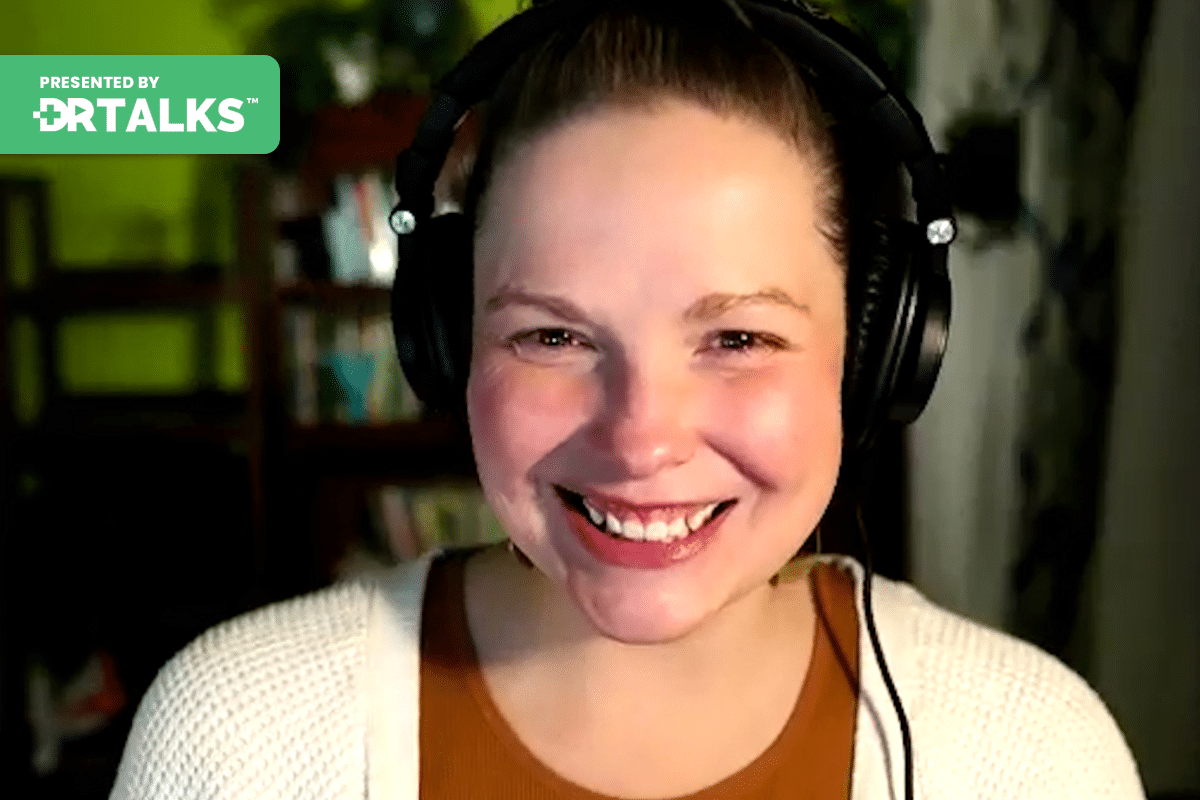

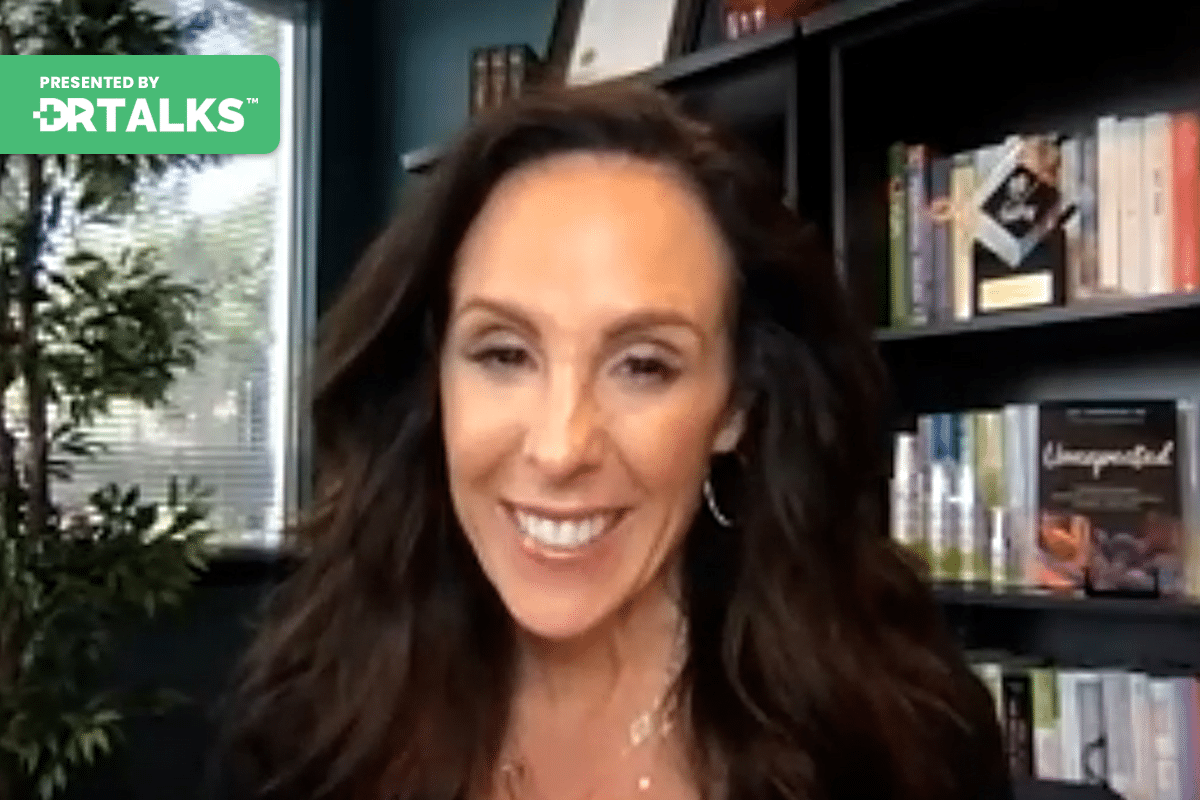
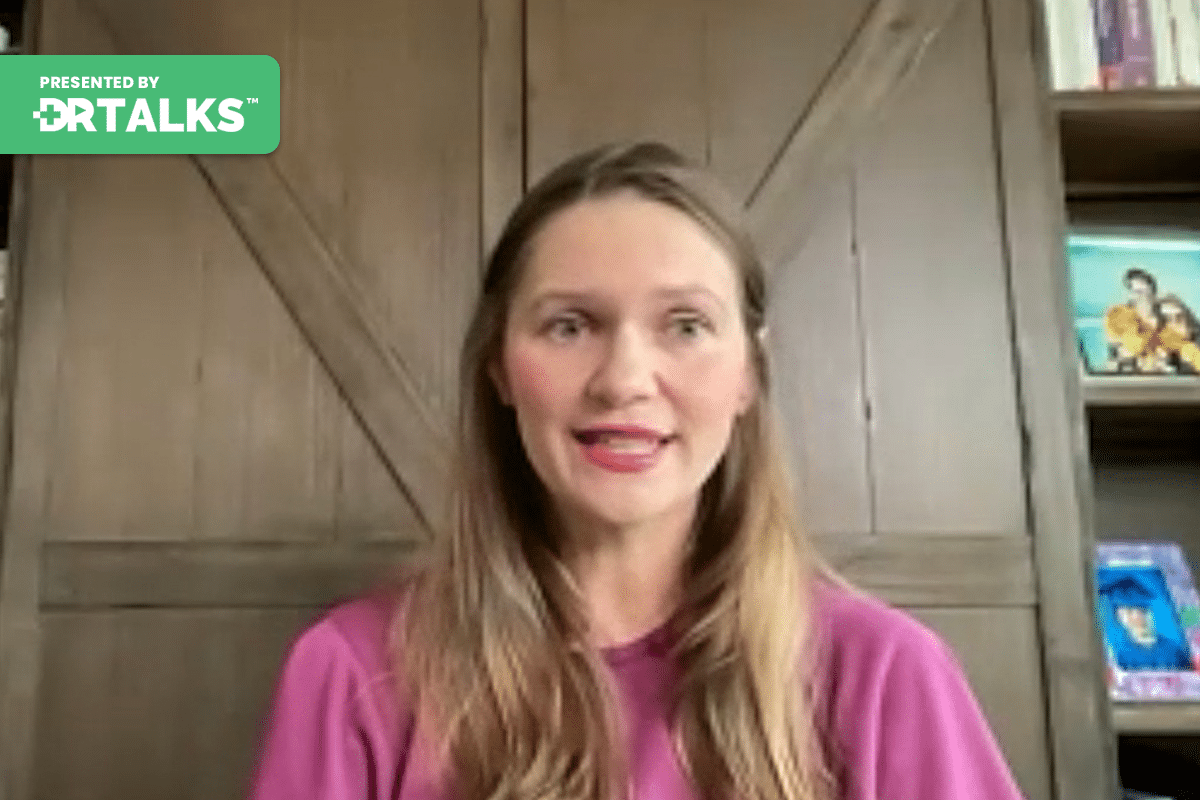
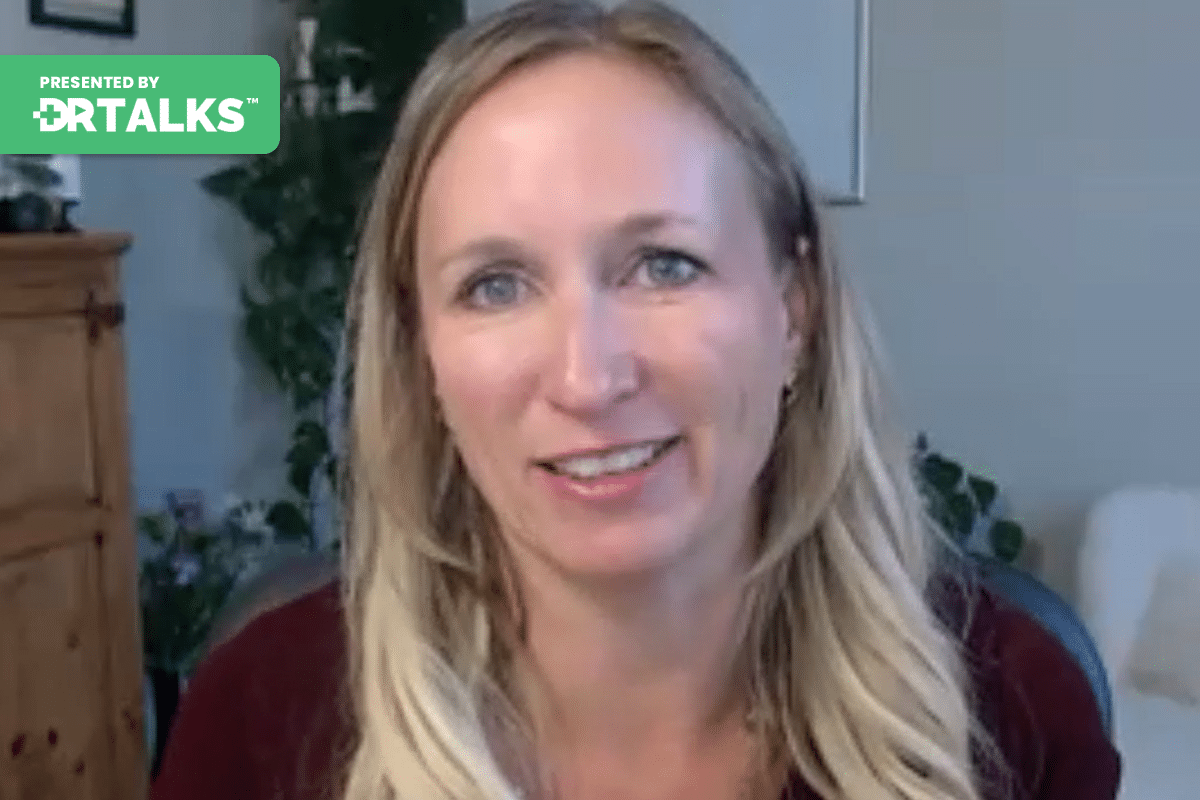

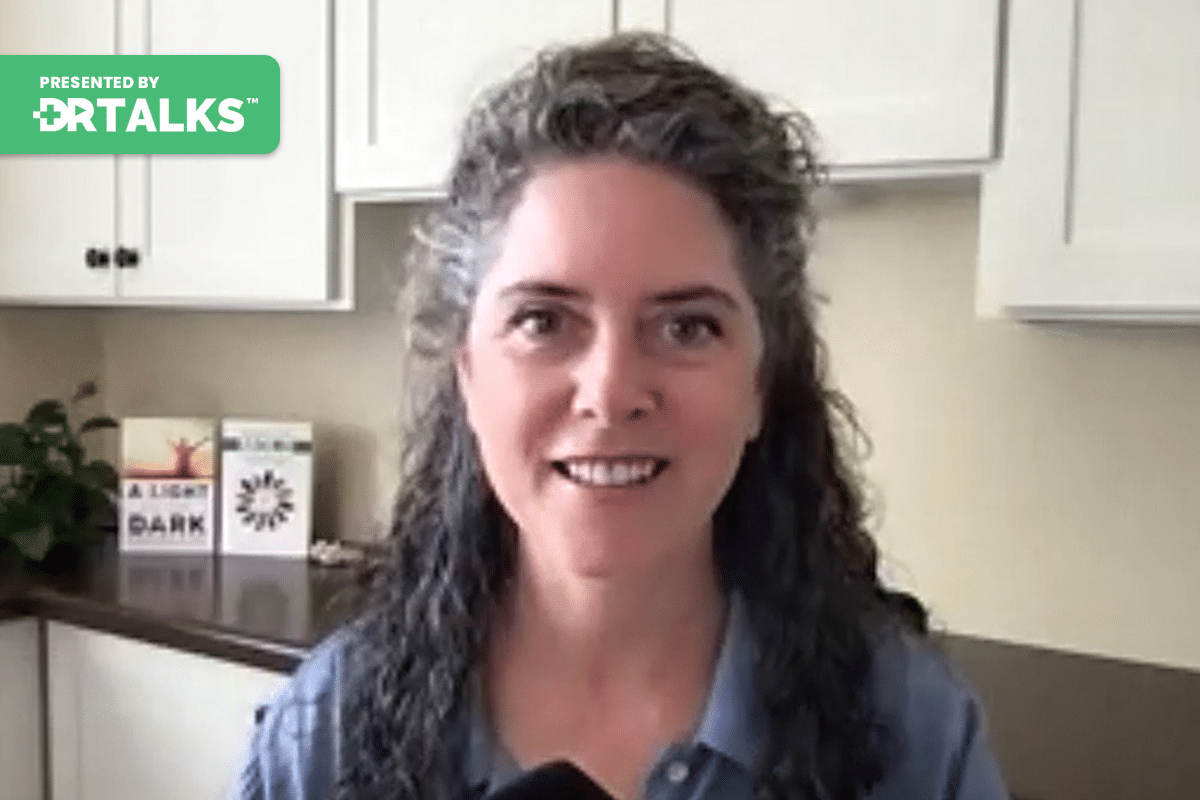
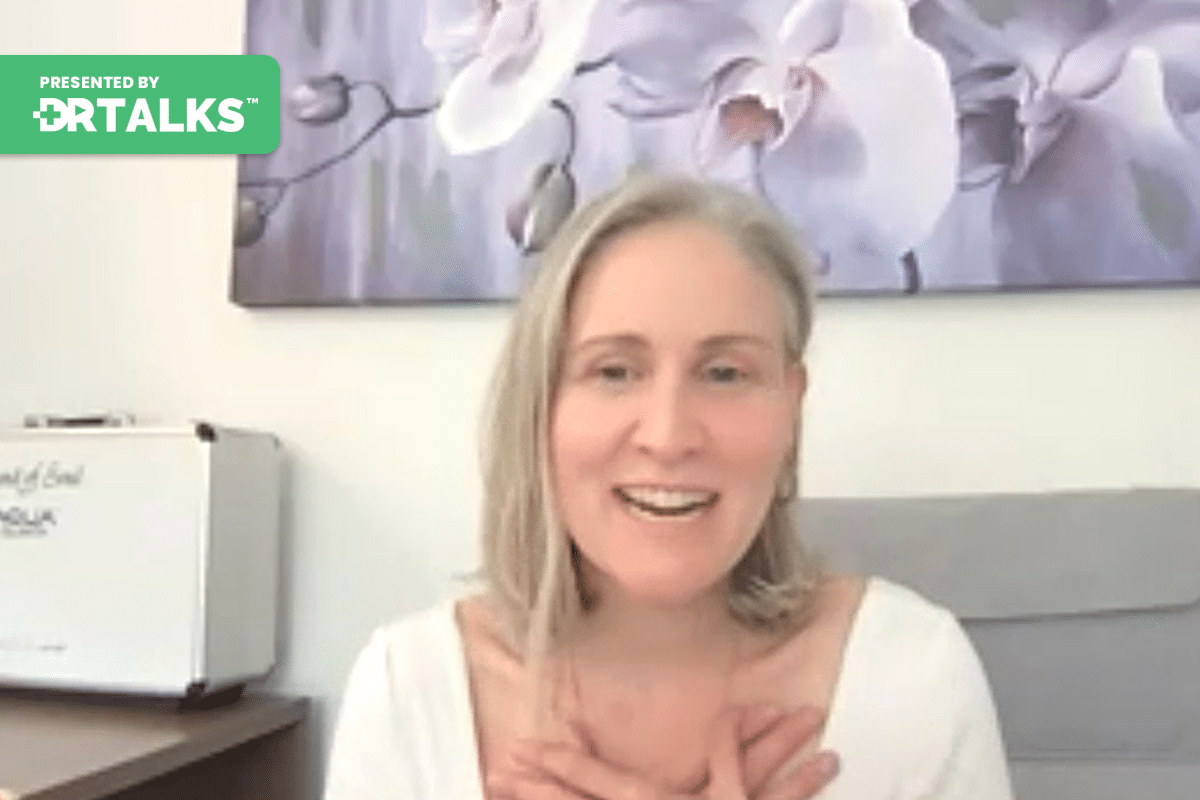


Awesome presentation. Many thanks for your knowledge and insight, Christa